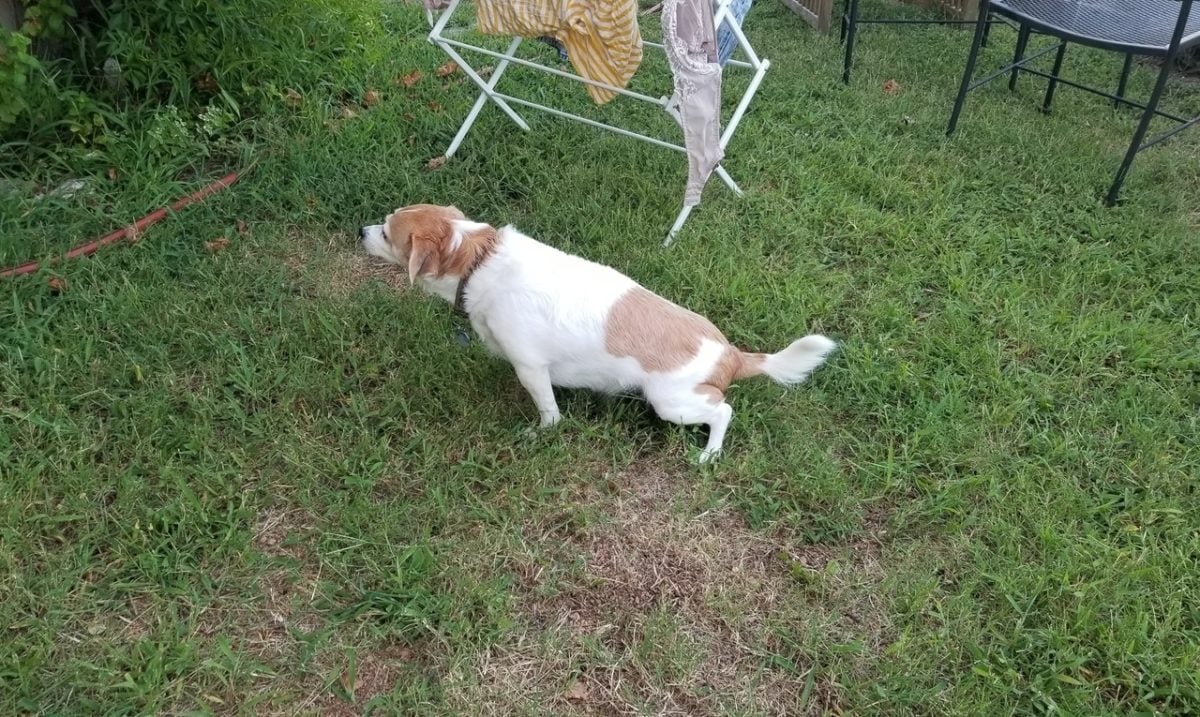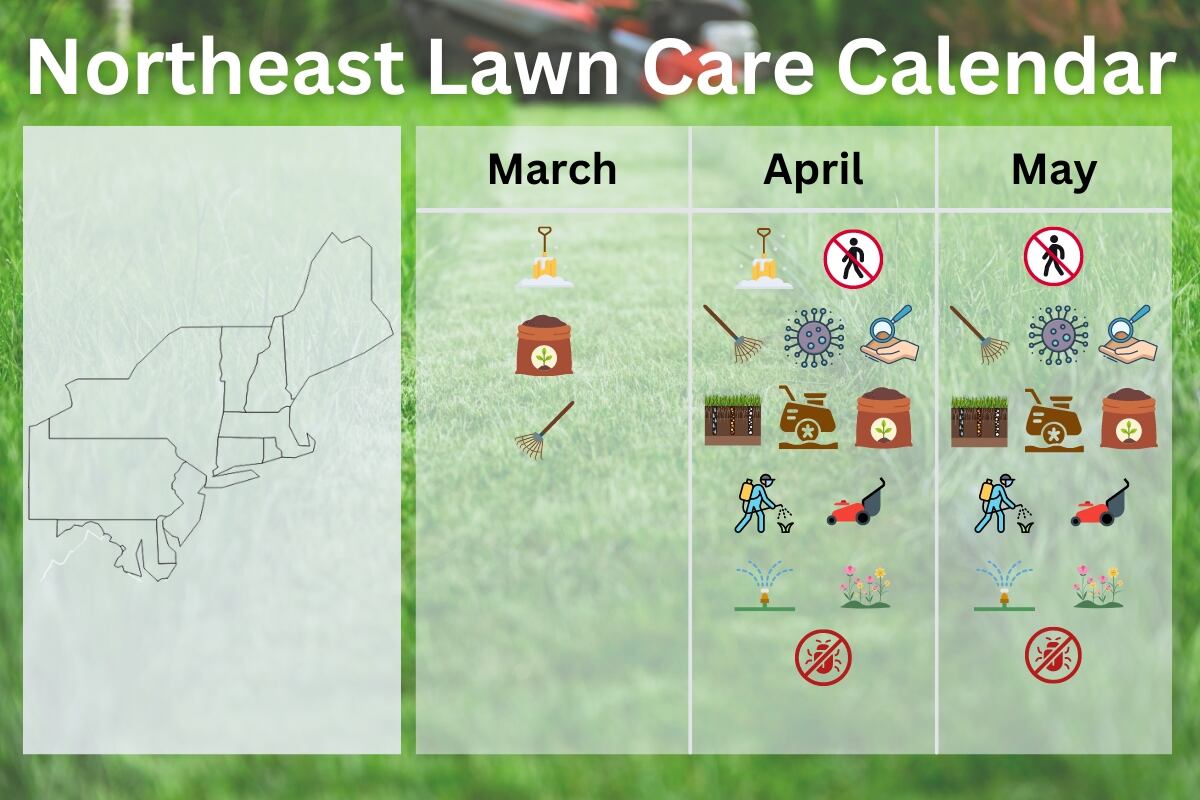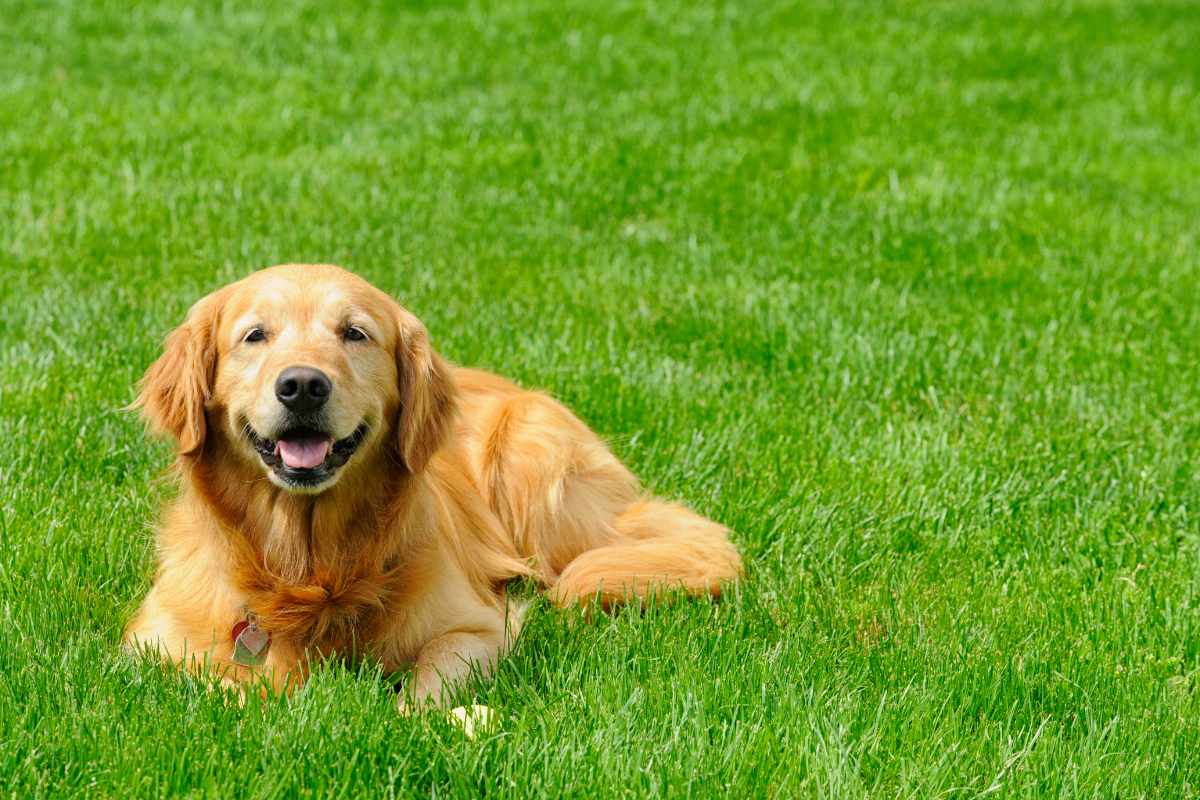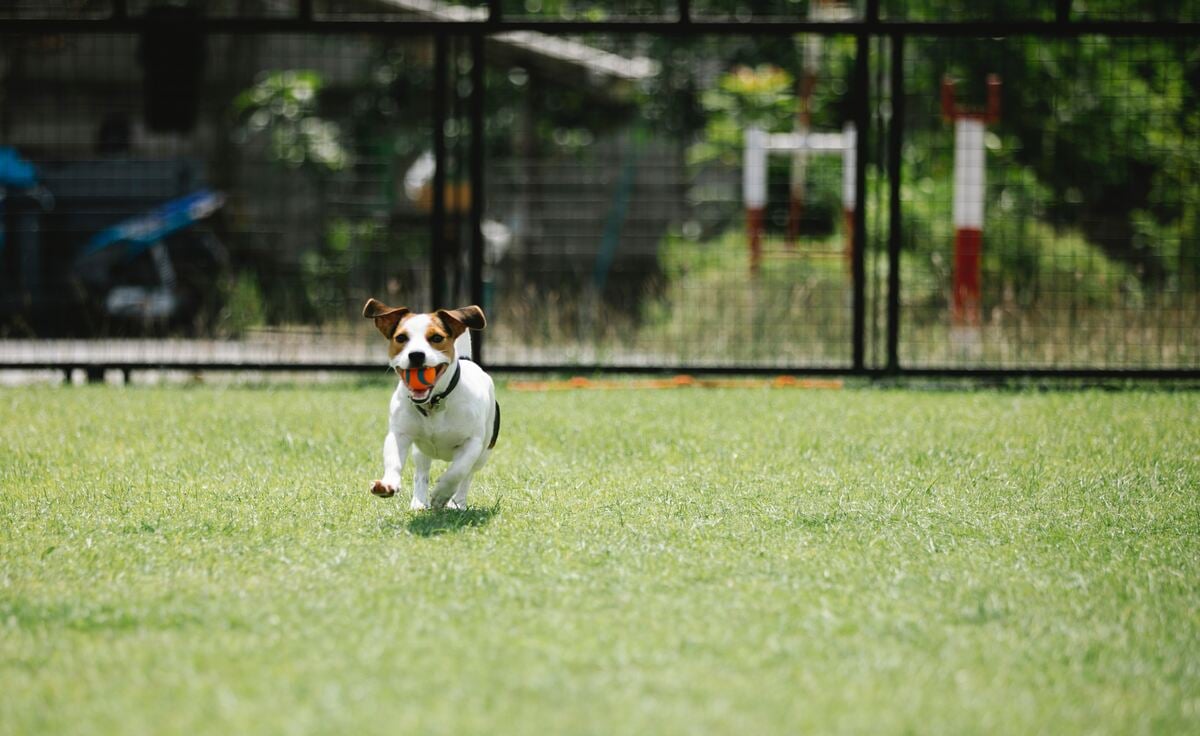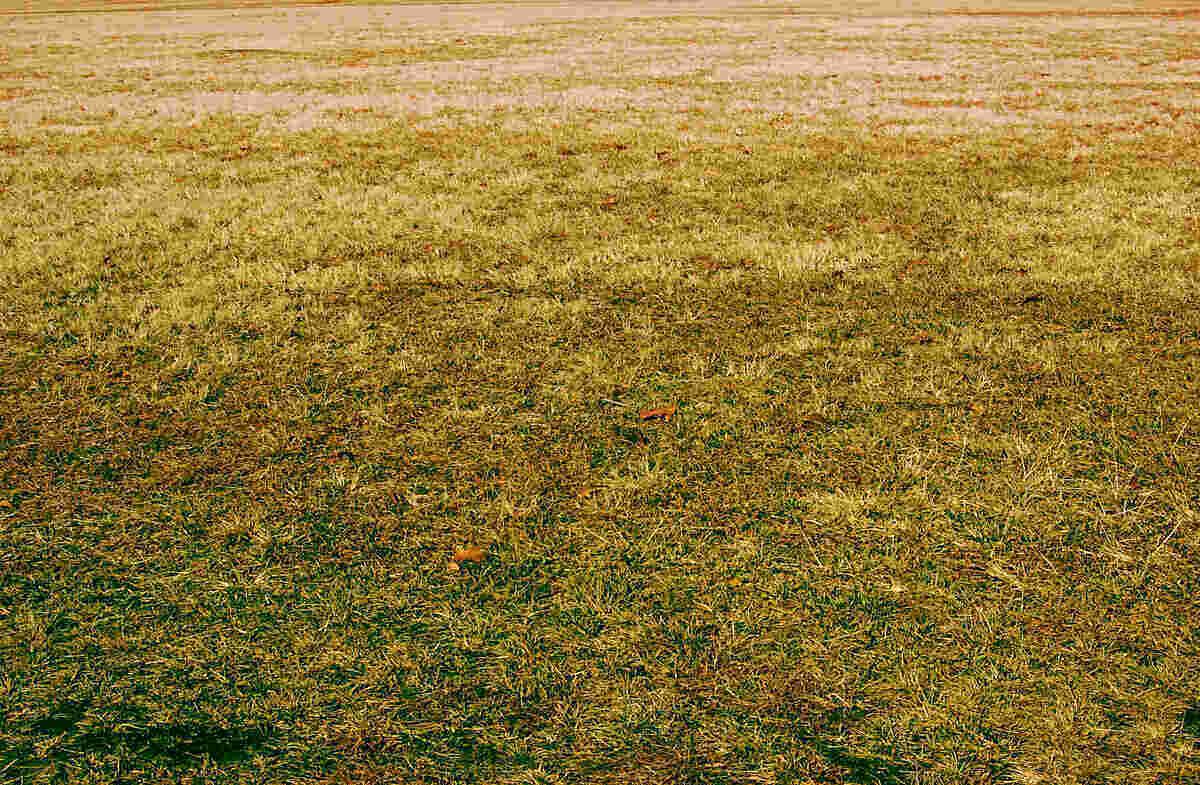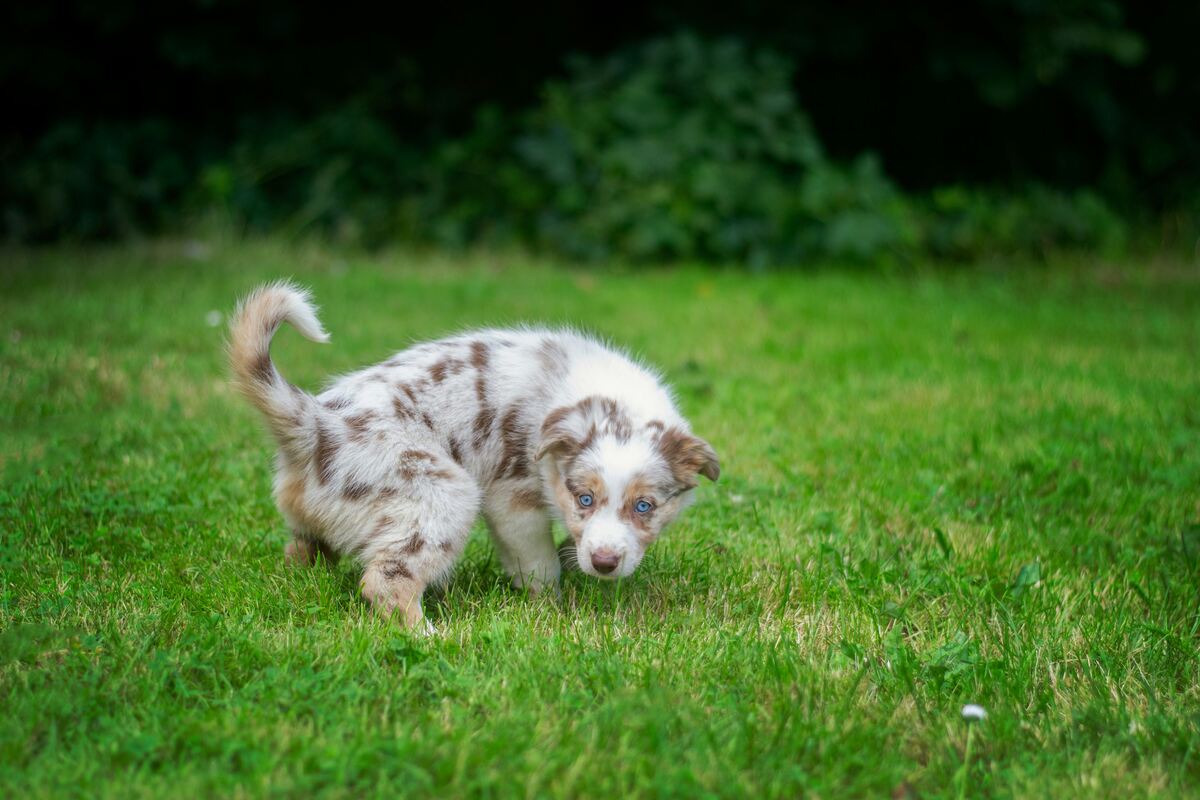
There are many myths about dog urine spots in the lawn that can harm the health of your turf and pup. For example, a common myth is that only female dogs leave spots.
“There are several urban myths surrounding the cause and the cure of the spots,” says Ali Harivandi, former environmental horticulture adviser at the University of California Cooperative Extension. Read below for six myths about dog urine spots on lawns.
Myth 1: Only Female Dogs Cause Spotting in Lawns
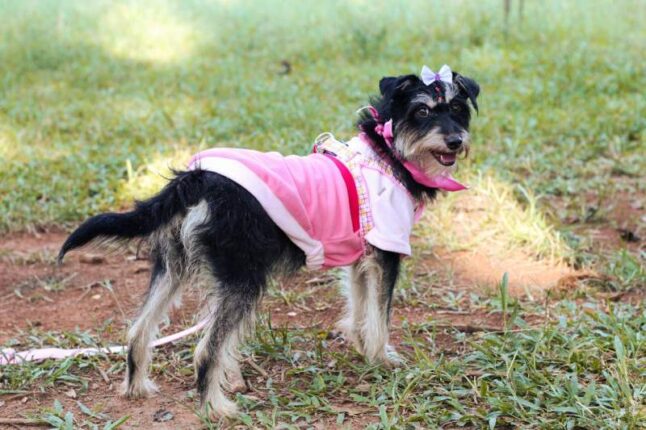
The Truth: Female dogs tend to squat when they do their business, leaving a small but dense urine spot on the grass. The quantity of urine can cause the grass to burn. But does female dog urine kill grass more quickly than male dog urine? Yes, but only because of the quantity of the urine.
It’s important to remember that male dog urine kills grass too. While it’s true that male dogs usually spread out their urine more, marking trees and shrubs instead of urinating on a flat lawn, they can still cause spotting. Young and older males also often squat rather than lift their legs just like females, leaving concentrated areas of urine in the same way that female dogs do.
Myth 2: Dog Spots Are More Common With Certain Breeds
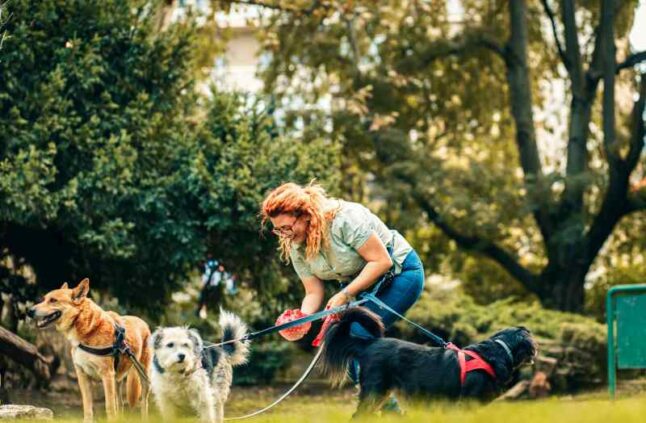
The Truth: Breed doesn’t determine whether a dog spot forms, nor the size or damage of the spot. This myth was probably started when a dog owner noticed more urine burns on grass when owning one breed of dog in relation to another breed, says Harivandi.
Some individual dogs have urine with a higher pH level and/or nitrogen content, or their urine is more concentrated. Factors like diet, water intake, and general health determine whether or not a dog will leave a spot, not the specific breed of dog. Whether it is a Dalmatian or a Dachshund, X still marks the spot.
Myth 3: Dog Spots Occur When Dog Urine Is Alkaline
The Truth: Although urine pH levels can affect lawn health, dog urine kills grass because of its high concentrations of nitrogen and salts – not its pH level. Dogs are natural omnivores that require high amounts of protein, and it’s that protein in their diets that makes their urine acidic – usually at levels of 6.0 to 6.5.
Many types of turfgrass may be negatively affected by either overly acidic or overly alkaline conditions, but the nitrogen is the true culprit in creating dog spots, not the pH of the urea itself. Although your lawn loves nitrogen just as much as the next blade of grass, the amount of nitrogen a dog deposits in one small area is too much for the grass to handle.
Dog spots in grass are often ringed with lush green grass that grows faster than the surrounding lawn. This is because the outside circle receives a smaller boost of nitrogen that allows it to grow instead of burn.
For more information about what really causes dog spots, read this article on Why Dog Pee Kills Your Grass (And How to Fix Your Lawn)
Myth 4: Dog Spots Can Be Prevented With Food Supplements
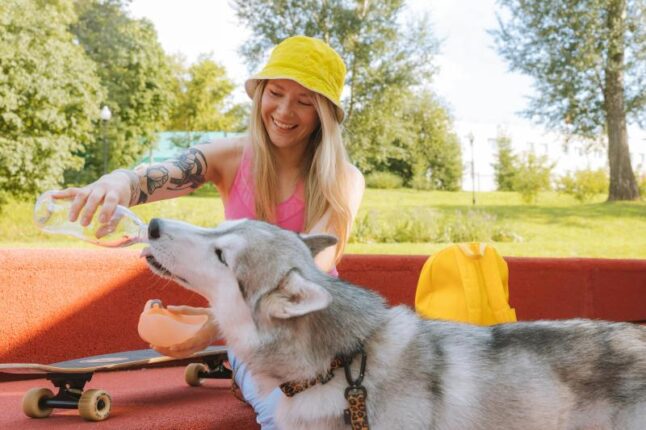
The Truth: Dog owners see shelves of dog food, dietary supplements, and other products that advertise a solution to dog spotting. These supplements usually work to reduce the alkalinity of your dog’s urine or make your dog drink more water.
But because dog spots are actually caused by heavy concentrations of nitrogen and salts, these products are generally useless and can cause real damage to your dog’s health. Always consult your veterinarian before adding supplements to your dog’s food.
Myth 5: Dog Spot Damage Can Be Fixed With Household Cleaning Products
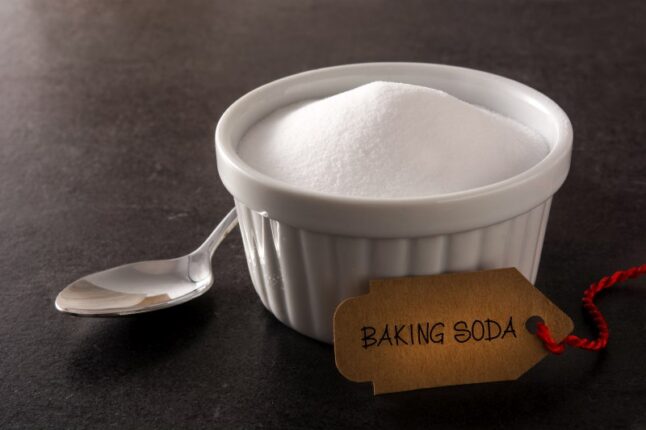
The Truth: Will baking soda neutralize dog spots on grass? Sprinkling baking soda, gypsum, dishwashing detergent, or other random household products won’t get the spot off of your yard, and may in fact cause even more damage.
Here’s why: Baking soda and gypsum contain salts that can worsen the problem. Dishwashing detergent is a surfactant and could help with water movement through the soil, but other ingredients in the soap might burn the grass itself, so it’s best not to add to the problem.
Myth 6: You Can Fix Dog Spot Damage With Fertilizer
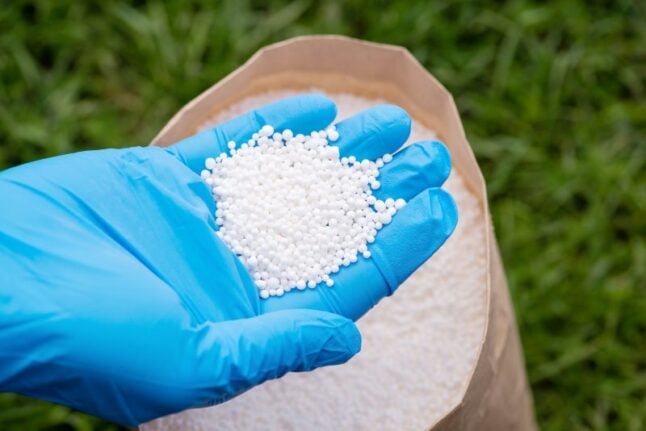
The Truth: Another myth is that dog spots can be revived with a bit of fertilizer. However, not only is this untrue, but it will in all likelihood make the problem worse. The cause of dog spots is a sudden influx of nitrogen, and since most fertilizers also contain nitrogen, you’ll only be adding fuel to the fire.
FAQ About Dog Spot Damage
How do I fix and prevent dog urine damage in the lawn?
Don’t despair if you find a dog spot on your lawn. As long as the grass is still alive, the spot is fixable. Here’s our comprehensive guide on how to fix dog urine spots in the lawn.
All you need is time. Eventually, the grass will process the extra nitrogen and turn back into healthy green turf. If you’re looking to speed up the process, water the spot.
Is the grass on a dog spot dead?
Sometimes, yes. The nitrogen damage from a dog spot can be severe enough to kill the affected grass, which means that you’ll have to reseed that spot. However, that’s not always the case. The grass is sometimes salvageable.
To learn how to bring your grass back from the brink, check out this article: How to Revive a Dead Lawn
How long does it take for grass to recover from a dog spot?
It can take about 14 days, or 2 weeks, for grass to recover from the high amount of nitrogen if it’s still alive. If the grass is already dead, it will take however long it takes for the new grass to grow, which will vary depending on the cultivar.
What kinds of grasses resist dog spots?
Warm-season grasses tend to handle dog spots better than cool-season grasses. Ryegrass and Fescue cultivars in particular are good for resisting dog spot damage and recovering from dog spots.
On the other hand, Kentucky Bluegrass and Bermuda cultivars tend to have the least resistance and be the most sensitive to dog spots.
Find Your Lawn Care Pros
It’s important to know fact from fiction when it comes to your lawn. Otherwise, you may find yourself damaging the grass without meaning to.
If you need help with your landscape, contact lawn care professionals near you. They can mow your grass for you, deal with damage from dog spots, and keep your lawn neat and healthy so that you can enjoy your outdoor space.
Main Image Credit: Unsplash
